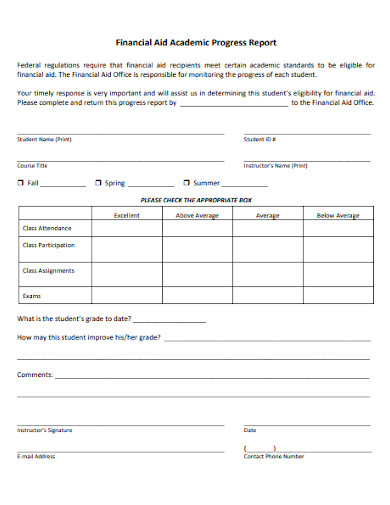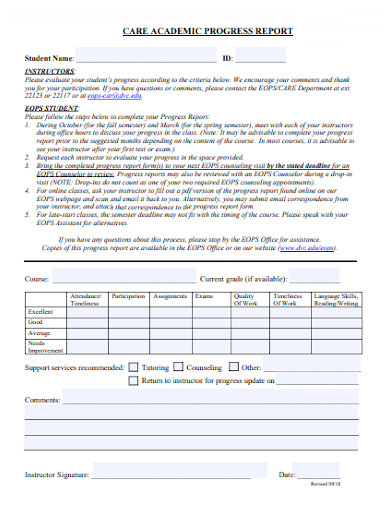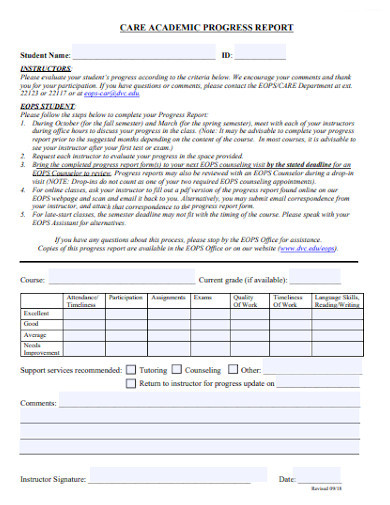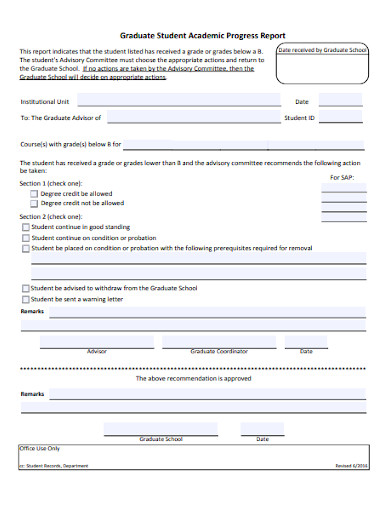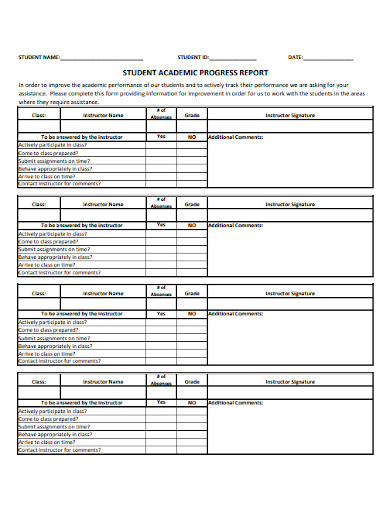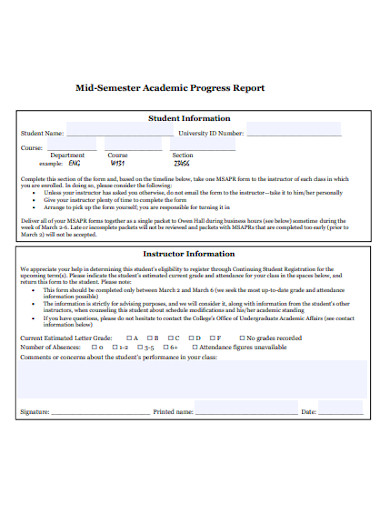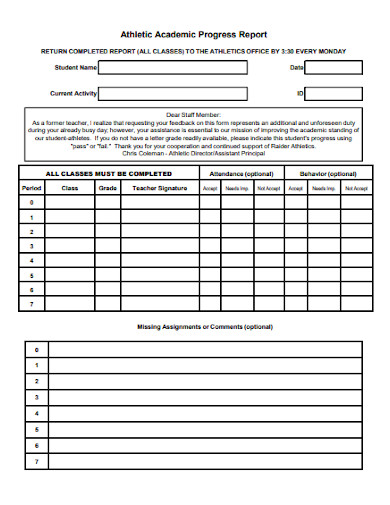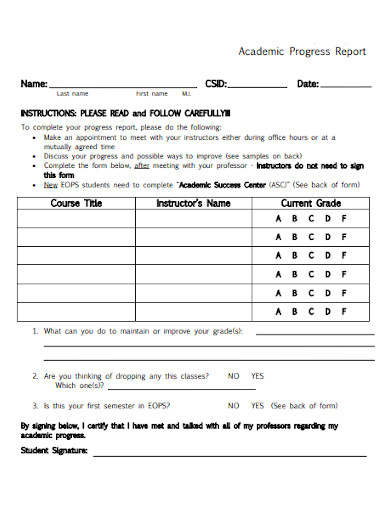10+ Academic Progress Report Examples to Download
The scope of a teacher’s job is endless. In addition to composing school reports and grading tests, you also need to send an academic progress report to students facing challenges. Have some of your students been underperforming? Their behavior and grades might put them at risk of losing their scholarships or failing to graduate. You need to notify them early on. To keep them from falling behind or withdrawing, send them an academic progress report to get their attention.
10+ Academic Progress Report Examples
1. Financial Aid Academic Progress Report
2. Care Academic Progress Report
3. Satisfactory Academic Progress Report
4. Graduate Student Academic Progress Report
5. Student Progress Academic Report
6. Home Education Student Academic Progress Report
7. Mid-Semester Academic Progress Report
8. Self-Reported Academic Progress Report
9. Athletic Academic Progress Report
10. College Academic Progress Report
11. Student Program Academic Progress Report
What Is an Academic Progress Report?
An academic progress report is a document that provides information regarding the student’s academic performance. Teachers often devise and send out this report to give students constructive feedback with the hopes of notifying them of their behavior and the risks that comes with it. In contrast, some teachers also compose this progress report to give outstanding students positive feedback. For the students receiving financial aid, this document is also handy to help the donors determine if the student still qualifies for the scholarship.
How to Write a Decisive Academic Progress Report
Elementary, high school, or college students all tend to misbehave and underperform. Despite that, giving them feedback early on can give them more time to conduct self-evaluation. It could result in them making appropriate responses or solutions to the problems to avoid the worst-case scenario. That said, teachers at all levels should learn how to write this academic report.
1. Identify the Main Concern
You can write an APR for different types of concerns. When you write one for a specific student, you need to determine all the challenges they are currently facing. Check their attendance sheet, quizzes, test scores, and records of class participation. Doing this would address every underlying issue that they have.
2. Conduct a SWOT Analysis
After identifying the concerns, you now need to run a SWOT analysis on the student. Each letter in SWOT stands for something. It is an acronym for strengths, weaknesses, opportunities, and threats. Doing this will help them know what skills they need to polish and what they need to work heavily on. You can find printable student SWOT analysis templates online.
3. Devise an Outline
Considering that you already know what to write, it is now time to devise an outline for your comment. Ensure that you would be able to mention the results of your analysis. To make it easier, you can first create a checklist of all the things you should include and incorporate them into your blank outline. After that, you can start composing your draft and finalize it right after.
4. Recommend a Behavior Modification Plan
Instead of scolding, the purpose of your academic progress report is to encourage the students. Regarding their behavioral concerns, you can suggest a behavior modification plan that you think would be the most effective solution to correct their actions. Before recommending an action plan, make sure you know enough of the circumstances the student is experiencing.
FAQs
What are the different kinds of academic progress reports?
You can write an academic progress report for concerns in a student’s academic performance, such as failing to submit assignments, low examination scores, and lack of class participation. The other types you can write progress reports for in students include behavioral concerns and attendance concerns. In addition, you can also write one to give feedback on positive performance.
What are the types of feedback you can give students?
Feedbacks can be positive, negative, and constructive. Despite that, you can also categorize feedbacks differently. There are three different types based on the purpose of writing them. Instructors can give feedbacks to express appreciation, offer to coach, and as a form of evaluation. Although different, people give them in hopes of pointing out your strengths and weaknesses.
Why is a progress report important for students?
Writing a progress report to your students would let them know where they stand academically. It would also notify them of the subject or classes where they are satisfactory performing and motivate them. On the other hand, if they are currently falling behind on some subject areas, your progress report would notify them early.
“No one should be left behind” that’s a famous motto that most schools and educators follow. What happens when there’s a student that falls behind? Resolve this problem early on by composing an academic progress report. On a positive note, you can also devise this report to help students’ retain their scholarship contract.



